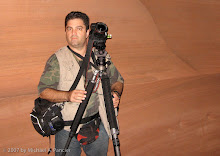Posted on Mon, May. 01, 2006
Hunt begins in Cuba for rare woodpecker
BY MIKE CLARY
South Florida Sun-Sentinel
HAVANA - Cuban ornithologists have received permission to search for the long-lost ivory-billed woodpecker in heavily wooded areas of the island that have been off-limits even to scientists since Fidel Castro seized power here almost 50 years ago. Backed by a grant from Birdlife International, a British conservation group, the search began in the pine forests of the Sierra Maestra mountains of eastern Cuba last week.
"I believe the bird is here," said Arturo Kirkconnell, co-author of the Field Guide to the Birds of Cuba and one of the island's top researchers. "We have a chance now to go to areas never visited before. The habitat is ideal, and there has been no evidence that the woodpecker is not there."
The reason that some remote areas of Guantanamo province, in the eastern end of the island, and in Pinar del Rio, to the west of Havana, are now open for scientific exploration are not exactly clear, even to the scientists involved.
Outsiders familiar with the project suggest the reasons for earlier prohibitions may be a combination of state security and bureaucratic whimsy.
"The Sierra Maestra has variously been shut off over the past three or four years," said David Wege, Caribbean program manager for Birdlife International. "From outside a closed administration, it's rather a fickle thing."
The launch of a hunt for the ivory-billed woodpecker here comes two years after the giant bird, believed to be extinct in the United States for some 60 years, was rediscovered in Arkansas. That news, announced by the U.S. Fish & Wildlife Service in April 2005, triggered a continuing scouring of 50,000 acres of cypress forest and a wave of international publicity.
In Cuba, where the struggle for the necessities of daily life is paramount, a mission to find a reclusive bird, no matter how colorful, is unlikely to generate as much excitement.
But verifying the existence of the woodpecker could prove to be a feather in the cap of a nation hoping to improve its world standing in the area of environmental protection.
"There is huge potential for the bird to be there, in vast forests that are poorly known," said Wege. "That's why we're putting money in there."
Eduardo Inigo-Elias, an ornithologist at Cornell University, which is heading the Arkansas search, said Cuba has less acreage suitable for the woodpecker than does the United States. Still, said Inigo-Elias, "Cuba does have 600 protected areas, and we are happy they are looking for it.
"I hope one day they will communicate to the world, `We've got it!'"
Once common in old growth forests of the southern United States and Cuba, the ivory-billed woodpecker has a spectacular 30-inch wingspan, a red top-knot and a mystique that has made it the Holy Grail of birders. The last universally accepted photograph of the bird was taken in Cuba in 1948.
But since then, the bird reportedly has been sighted by experts many times, in the United States and Cuba. The last reliable sighting in Cuba was made in Guantanamo province in 1986 by Lester Short, then chairman of ornithology at the American Museum of Natural History in New York.
But Kirkconnell, 46, a curator at Cuba's National Museum of Natural History, is certain that he has heard the woodpecker's distinctive double-knock, most recently in 1999 in Pinar del Rio. He also said he has collected reliable reports of woodpecker sightings from forest guards in the Sierra Maestra mountains in eastern Cuba.
"I have been searching for rare birds all my life," said Kirkconnell, a woodpecker specialist who is often in the field leading groups of birders from Britain and Canada. "We now have the permission, along with the funding and transportation, for a thorough hunt in areas never explored. So we are hopeful."
---------------------
Ed. In my opinion, it is a futile search. They'll never find the bird in the Sierra Maestra. They need to look in Havana. Reports show that they have been sited in the "El Combinado del Este Prison" in Havana. Castro has them locked up in his gulags for Crimes Against the Revolution; for being agents of the Miami Mafia and the American Government, and for crapping on statues of Che and Fidel. It is well known that taking a crap on the statue of the leaders of Cuban Revolution is punishable by death or life imprisonment, or being forced to listen to Castro speeches 24/7, a fate worse than death I am told.


1 comments:
Saw one of these today april 11, 2011 in boca raton, florida
Post a Comment